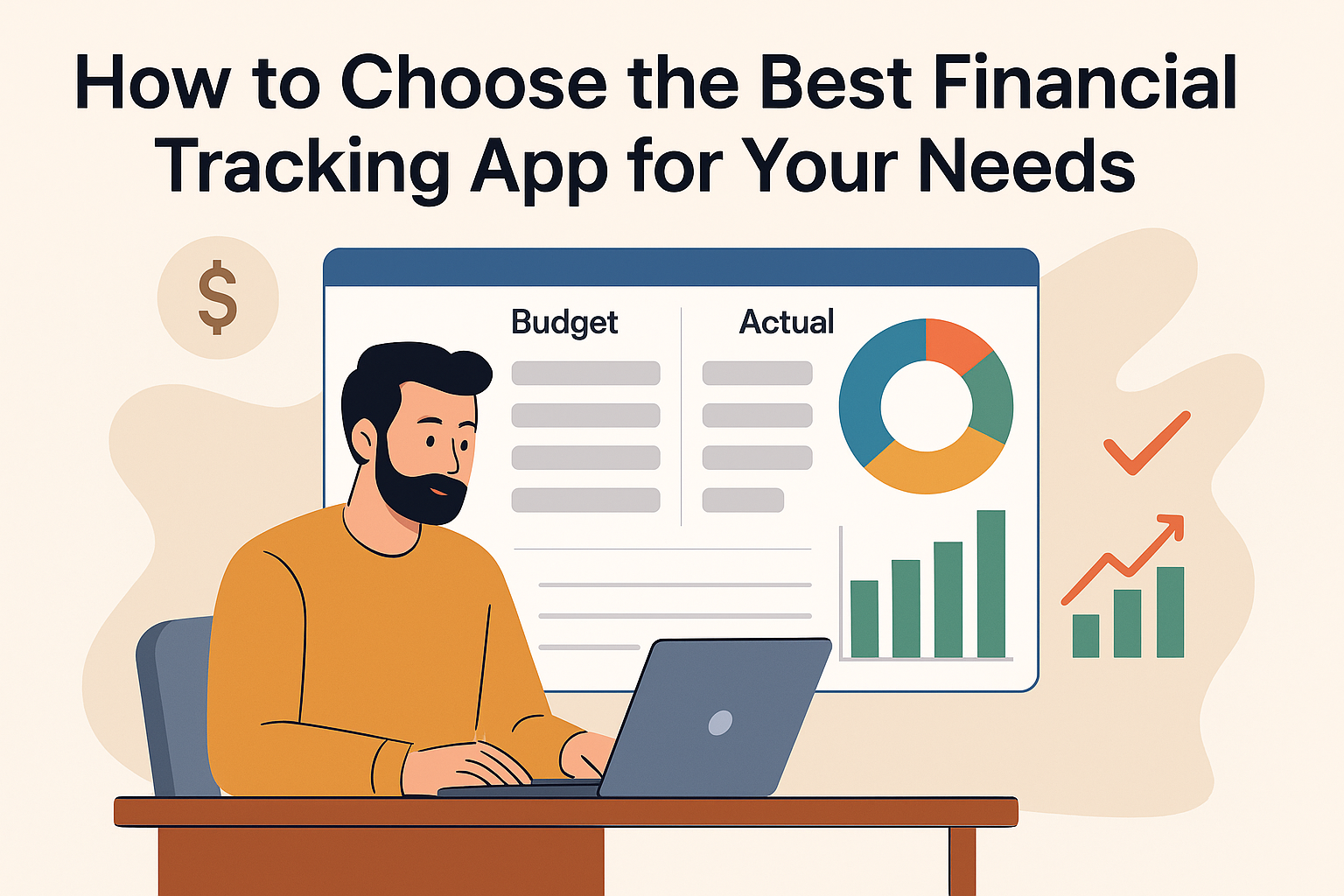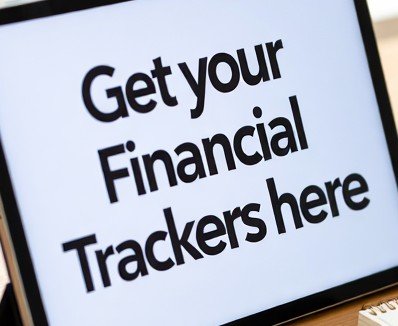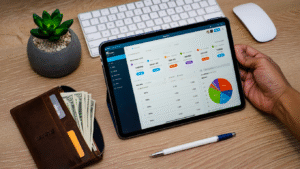
The Ultimate Step-by-Step Guide
🧠 Step 1: Understand What You Need to Track
Before downloading any app, stop and think:
What kind of financial data do I need to track?
✅ Personal Finances:
- Everyday expenses
- Salary and side income
- Bills, subscriptions, and savings goals
✅ Freelance or Business Finances:
- Invoicing clients
- Tracking deductible expenses
- Monitoring project budgets and cash flow
✅ Family or Shared Finances:
- Joint household expenses
- Shared savings goals
- Childcare, groceries, mortgage payments
🎯 Pro Tip:
Identifying your primary financial activities will instantly filter out apps that don’t match your needs.
📱 Step 2: Look for Essential Core Features
A good financial tracking app should make your life easier, not more complicated.
Key Features to Look For:
🔹 Expense Tracking:
Easily log daily spending, categorize expenses, and identify spending patterns.
🔹 Income Management:
Track multiple income streams like salaries, freelance projects, or passive income.
🔹 Budget Creation and Monitoring:
Set monthly or project-based budgets and get real-time updates.
🔹 Customizable Categories:
Tailor spending and income categories to match your lifestyle.
🔹 Visual Summaries:
Beautiful graphs, pie charts, and dashboards that show exactly where your money is going.
🔹 Data Export Options:
Easily export data to Excel, Google Sheets, or PDFs for backups and advanced reporting.
🔹 Automatic Bank Syncing:
(Optional) Link your accounts for real-time updates.
Tip: Only link if you trust the app’s security!
💻 Step 3: Choose Based on Platform and Accessibility
Where and how you access your financial tracker matters just as much as the features it offers.
📱 Mobile Apps:
Ideal if you need quick entries, notifications, or on-the-go access.
🖥️ Desktop Software:
Perfect for deep analysis, detailed reports, and bigger screens.
📄 Google Sheets or Excel Templates:
For full control, zero subscription fees, and maximum customization.
☁️ Cloud Syncing:
Access your data across multiple devices seamlessly.
📴 Offline Mode:
Critical if you often work without internet access.
🎯 Pro Tip:
Think about your daily routine. Choose an app that fits your flow—not the other way around.
🔐 Step 4: Prioritize Privacy and Security
When it comes to your financial data, trust is non-negotiable.
🛡️ Essential Security Features:
- Two-Factor Authentication (2FA): Extra login security
- End-to-End Encryption: Your data stays private
- Zero Bank Linking Option: Choose apps that allow manual entry if you prefer
- Transparent Privacy Policies: Know exactly how your data is stored and used
❗ Warning:
If an app feels shady about how it handles your data, walk away.
💸 Step 5: Match the App to Your Budget
Not every great app comes with a high price tag.
Many of the best financial tracking solutions are surprisingly affordable—or even free!
📈 Typical Pricing Models:
- Free: Great for basic needs, often supported by ads.
- One-Time Purchase: Popular for spreadsheets and downloadable templates.
- Monthly Subscription: Continuous updates and new features, but adds up over time.
- Annual Subscription: Discounted yearly rates compared to monthly plans.
🎯 Pro Tip:
Avoid apps with hidden fees. Always read the fine print before subscribing.
💬 Step 6: Read Reviews and Test Drive Before Committing
Not every app that sounds perfect on paper will feel perfect in your hands.
🔍 Research Tips:
- User Reviews: Look for feedback about reliability, ease of use, and customer support.
- YouTube Demos: Watch quick walkthroughs to see real user experiences.
- Free Trials: Most apps offer 7–30 days free—use it to fully test features.
- Refund Policies: Know your options in case you’re not satisfied.
🎯 Pro Tip:
An app might check all the boxes but still feel clunky to you. Always test before committing!
✨ Bonus Tip: Start With a Financial Tracker Spreadsheet
If you’re unsure where to begin, a spreadsheet is often the best first step.
📄 Why Spreadsheets Are a Great Starting Point:
- Beginner-Friendly: No steep learning curve.
- Highly Customizable: Tweak categories, formulas, and layouts however you like.
- Low-Cost or Free: One-time purchases or free templates available.
- Full Control Over Data: No external apps storing your information.
- Offline Access: No internet required to manage your finances.
🎯 Perfect For:
- Freelancers
- Small business owners
- Budget-conscious individuals
- People who value privacy and control
📌 Quick Recap: Choosing Your Perfect Financial Tracker
1. Identify your tracking needs → Personal, business, family?
2. List the features you can’t live without → Expenses, income, budgets, dashboards?
3. Choose the right platform → Mobile, desktop, spreadsheet?
4. Prioritize privacy and security → 2FA, encryption, manual entry?
5. Pick a plan that fits your budget → Free, one-time, or subscription?
6. Test drive and read reviews → Hands-on experience matters!
🎯 Final Thoughts: Your Financial Future Starts with the Right Tools
The truth is, the best financial tracking app is the one that matches your personal habits and goals.
Maybe it’s a sleek app packed with automation and fancy dashboards.
Maybe it’s a no-frills spreadsheet that you designed yourself.
Either way, it should make managing your money simpler, not harder.
✅ Take your time to compare options.
✅ Test a few before settling.
✅ Choose the one that feels right for your workflow.
When you find the right fit, you’ll stay motivated, stay organized, and move closer to your financial goals—one transaction at a time.
Need a simple and powerful way to track your income and expenses?
👉 Check out our ready-made digital trackers built in Google Sheets — made for freelancers, creators, and business owners who want to stay on top of their money without the overwhelm.


